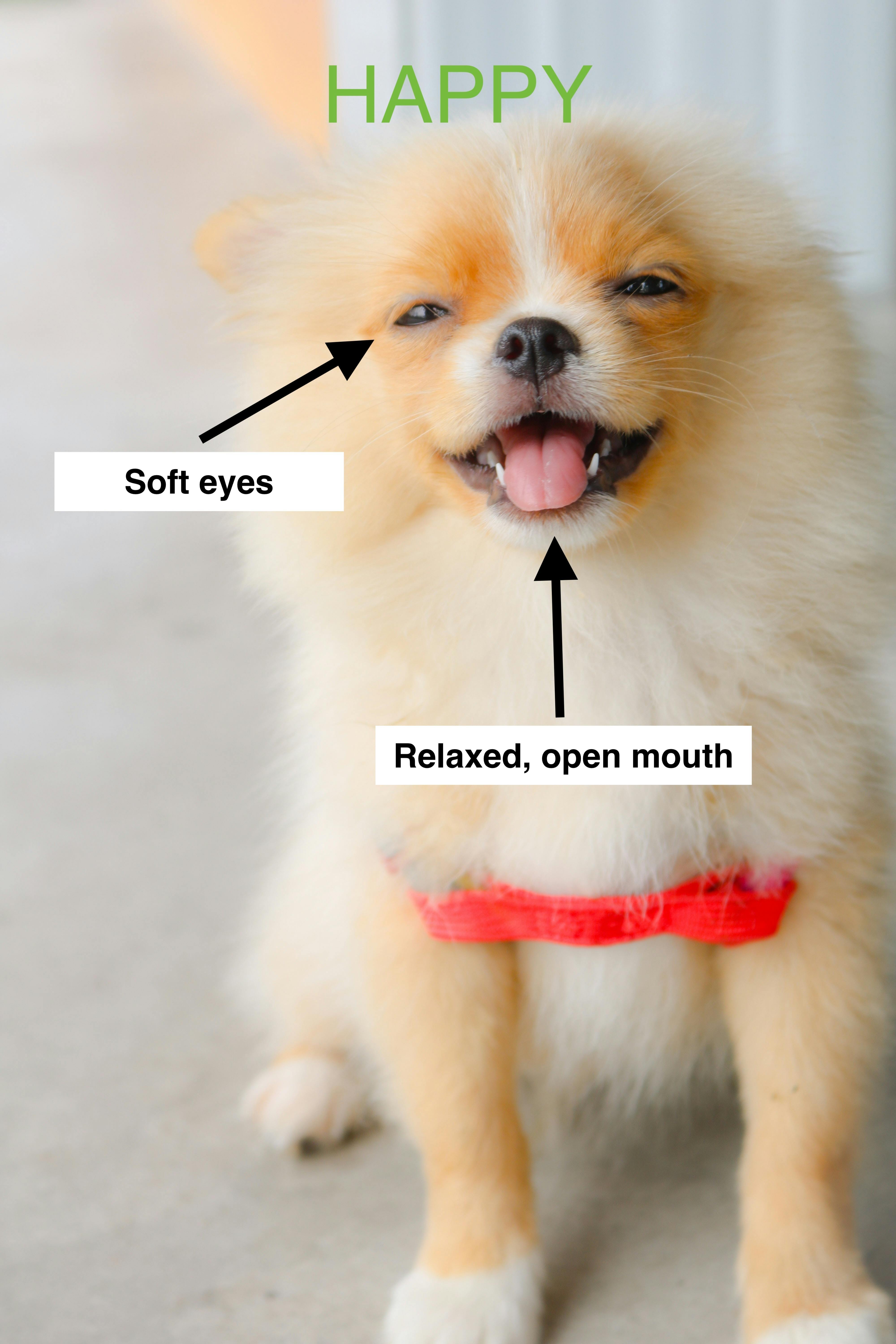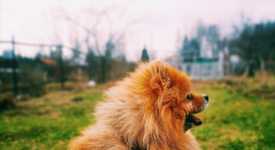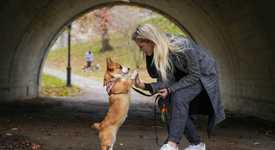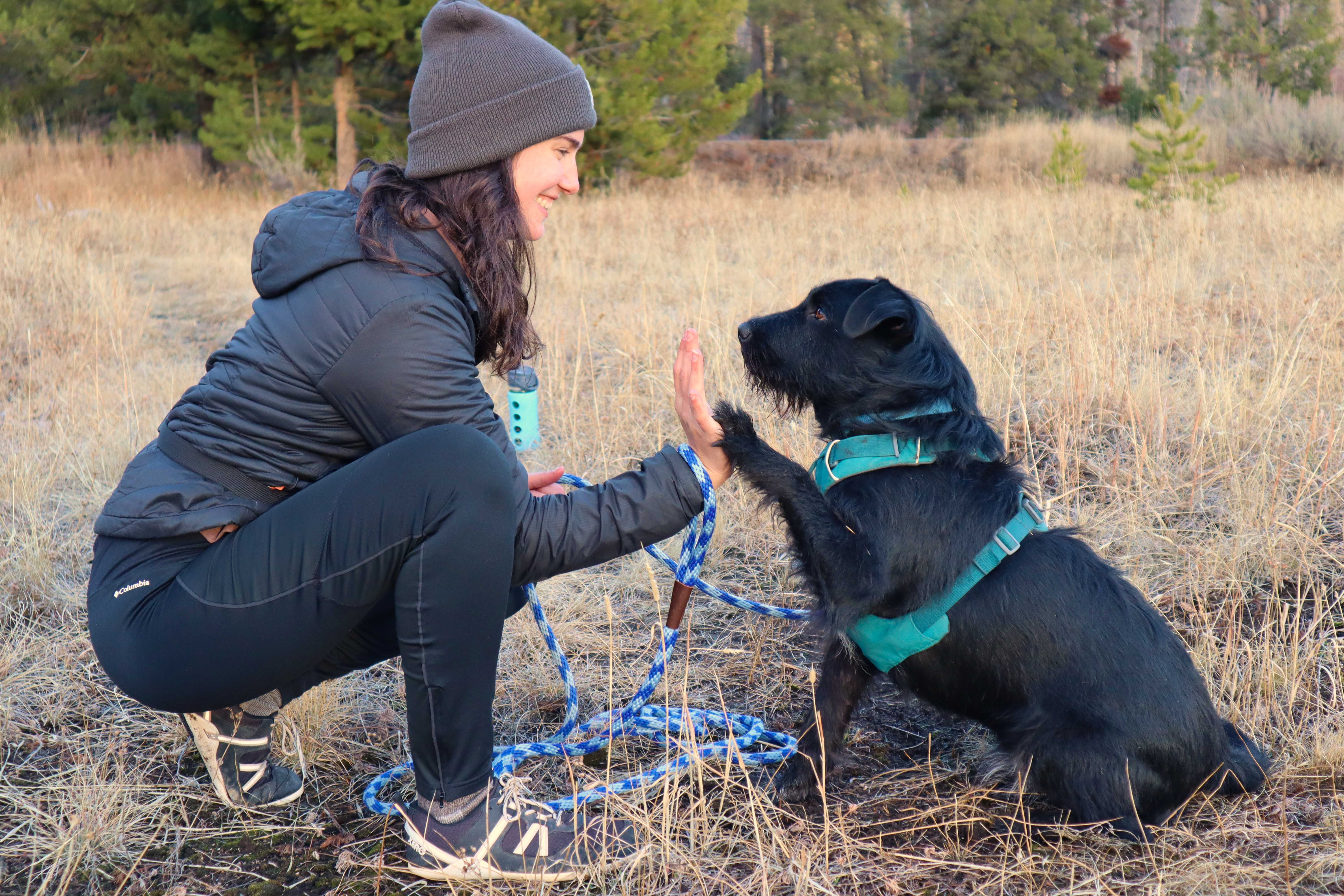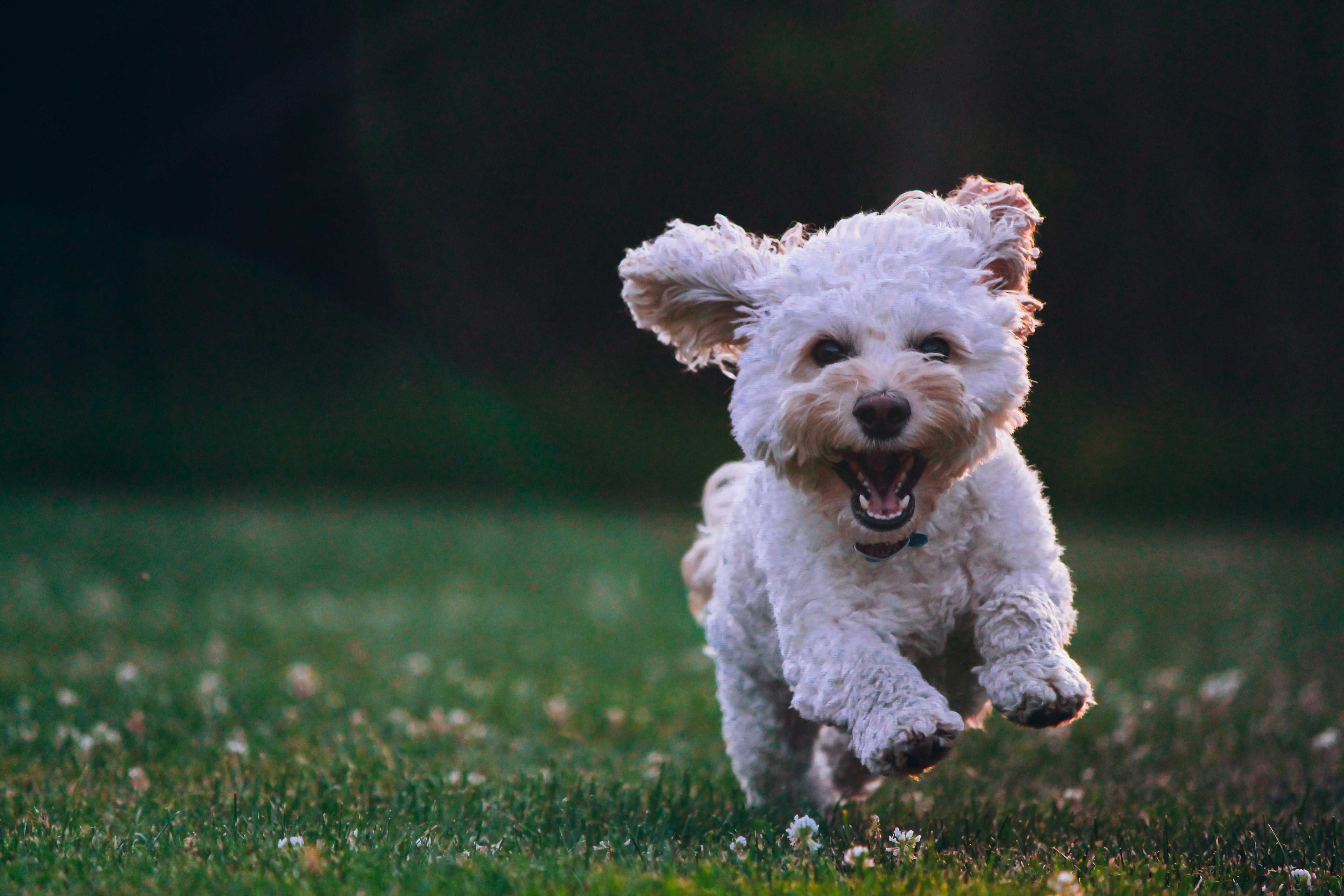
Unlock 10 Expert Puppy Training Tips!
Sign up with your email and receive a free video guide to transform your puppy into a well-behaved companion
Unfortunately, dogs can't speak. And, as of writing this, no one seems to be trying to develop some kind of sci-fi device that translates their thoughts into words (maybe for the better...).
Which means it's our responsibility to learn to communicate with our canine friends—via their body language.
Once you master reading dog body language, you might be surprised by the "conversations" you're able to have with your dog. You can ask them if they want to play and receive a clear yes or no. You can understand if they want to go say hi to your neighbor or if they're stressed by the idea. You can get their opinion on the latest Kardashian scandal (okay, maybe not that last one).
Reading Dog Body Language to Change Dog Behavior
Knowing what our dogs are saying can help us understand why our dogs are behaving the way they are. Many behavioral problems can be mitigated simply by dog owners being able to read their dog’s body language and take the appropriate action.
This is because when we can read dogs’ subtle signs we’re able to act before unwanted behaviors begin. Take a reactive dog. If you can intervene when they first start showing signs of stress, you can prevent a full-blown reaction from happening. Stopping a behavior before it happens is much easier than stopping it after.
The wonderful dog trainer, Terry Ryan, has her clients think of a slide. You can turn around and decide not to slide at the top of the ladder, but once you start sliding it can be very difficult to stop. Same goes for problem behaviors.
Happy Dog Body Language
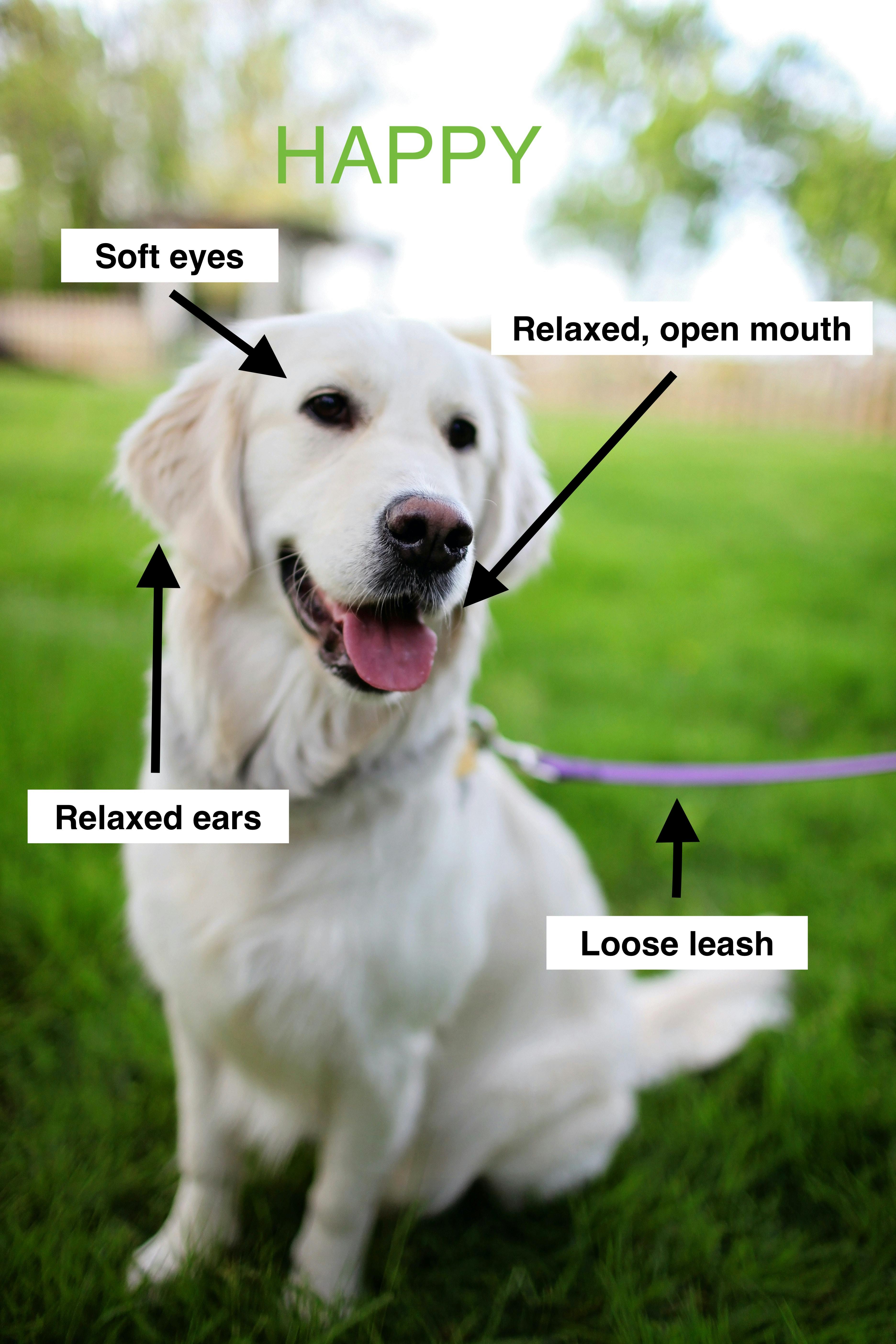
Look for:
- Wiggly bodies, frequently curved in a C-shaped body position
- Soft eyes that may be partially closed
- A relaxed jaw
- A mouth that’s gently closed or slightly open with lolled tongue
- Quiet breathing
- The tail carried at or slightly below the back. Although, this isn’t the case for breeds who naturally carry their tails in a high, curled-over position.
- The tails may also be loosely wagging. If your dog has a docked tail, it can be difficult to tell the speed at which it’s wagging, so don’t rely on this signal.
- Happy dogs also tend to be attentive and may seek out eye contact
You may also see play bows that indicate playfulness.
Note: every dog is different, especially amongst different breeds, so it's important to pay attention to your dog.
Stressed Dog Body Language

Look for:
- Ears pinned back or flat against the head
- Ears held perpendicular to the body
- Half-moon or “whale” eyes. That is much of the whites of the eyes are visible in a crescent moon shape
- Rapid panting with the corners of the mouth pulled back
- Mouth suddenly shutting when the dog had been previously happily panting
- The tail may be tucked under their body, held straight or high, or held low if their normal tail carriage is curved up and over. Their tail may be wagging, but it will look stiffer, tighter, and faster than a happy tail wag.
- They may also be trembling, pacing, freezing in position, stiff, exposing his belly, or urinating
You can also look out for differences in your dog’s behavior that indicate stress:
- Is your dog unwilling to take treats suddenly? Or are they taking treats harder and faster than usual?
- Is your dog usually attentive to you, but suddenly seems to be ignoring you?
- Is your dog scanning the environment?
What are Dog Displacement Behaviors?
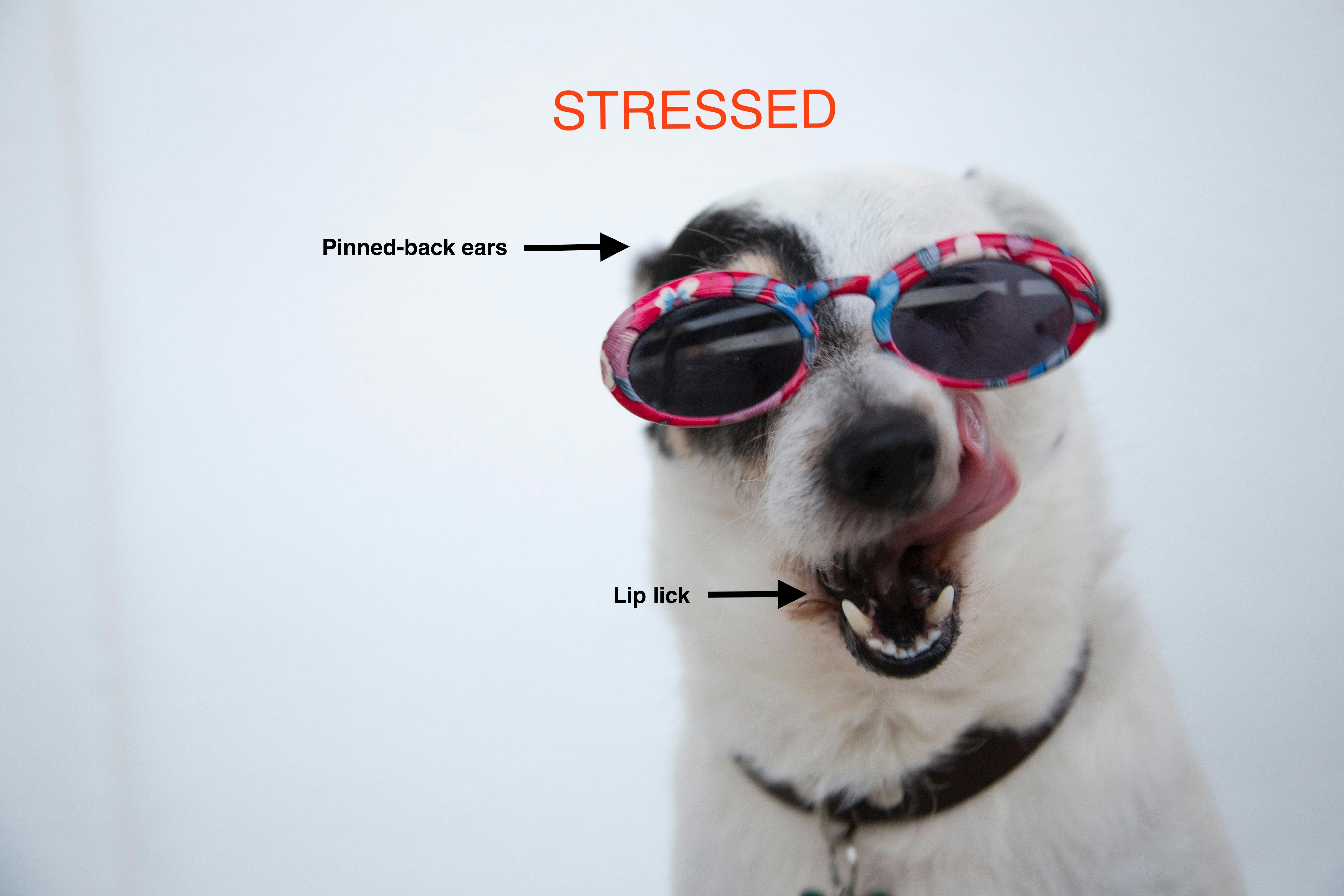
Displacement behaviors indicate that your dog is feeling some stress. These are behaviors that make sense in context, but indicate stress out of context. Just like you might suddenly change the subject when someone brings up an uncomfortable topic or pull out your phone and pretend to text if someone is standing a little too close to you in an elevator.
- Yawning when your dog isn’t tired, for example while they are out on a walk
- Shaking off like they would after a bath, but they’re dry (this means they are handling stress by “shaking it off”)
- Lip-licking
- Scratching
- Randomly starting to sniff or sniffing very intently
These behaviors can also tell you when your dog is saying "no, thanks." For example, if you go to scratch your dog's head and he licks his lips and ducks his head, he's telling you he doesn't want to be touched.
Pro tip: If you want to be that person all dogs love, read their body language as you interact with them. Respect those no's. You may find that the more you respect a dog who doesn't want to be touched, the more they will seek out you touching them.
When it comes to dog reactivity, looking out for displacement behaviors is super helpful to avoid your dog’s bigger reactions. Frequently, your dog will show a displacement behavior before they bark, lunge, growl, snap or vocalize. With these behaviors, they’re telling you that they’re starting to feel uncomfortable.
Remember, Look at the Big Picture
When interpreting dog body language, keep their full body in mind. A dog may have ears that look pinned back, but if they're otherwise loose and wiggly they may be feeling just fine. Also keep your own dog in mind. Pay attention to their specific signals, as every dog is different.
Test Yourself
Look at the images below. Decide whether or not you think the dog is stressed or happy. Then scroll down to see the results. Note that an image is only a snapshot in time and can't always accurately describe how a dog was feeling in a moment.
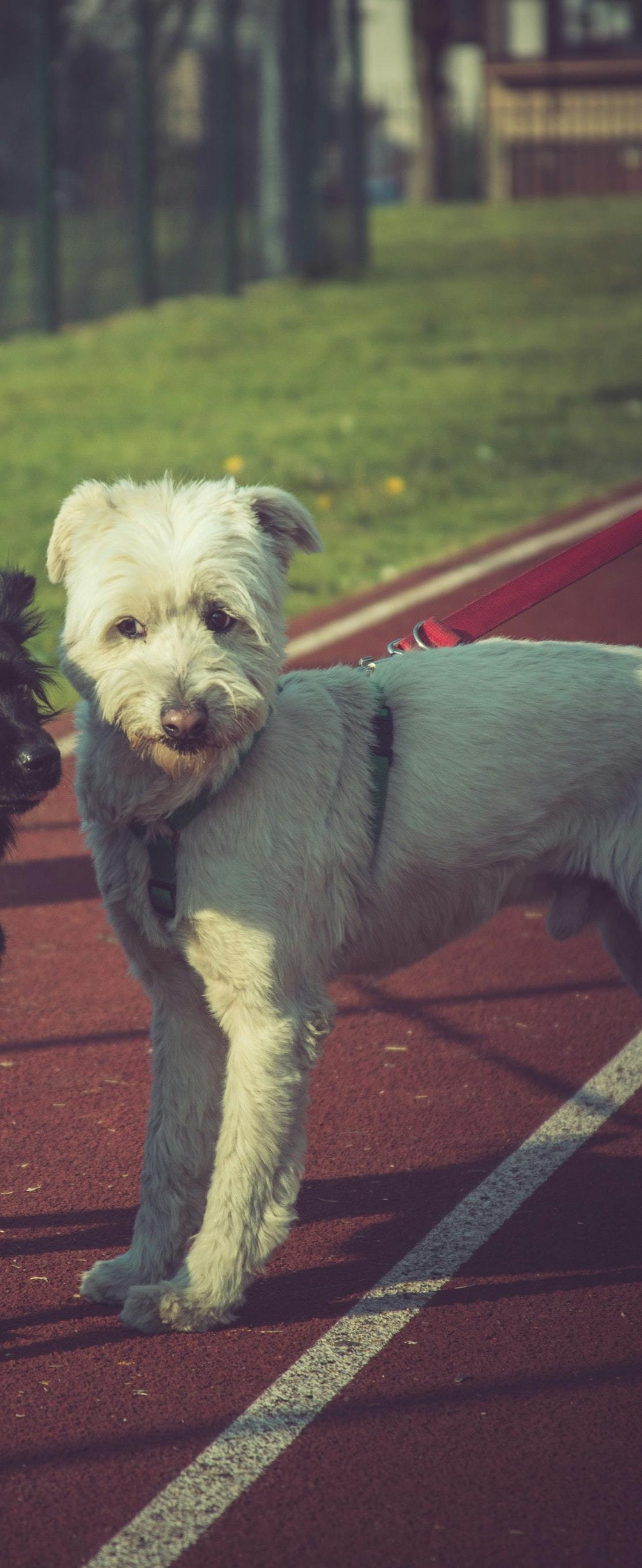
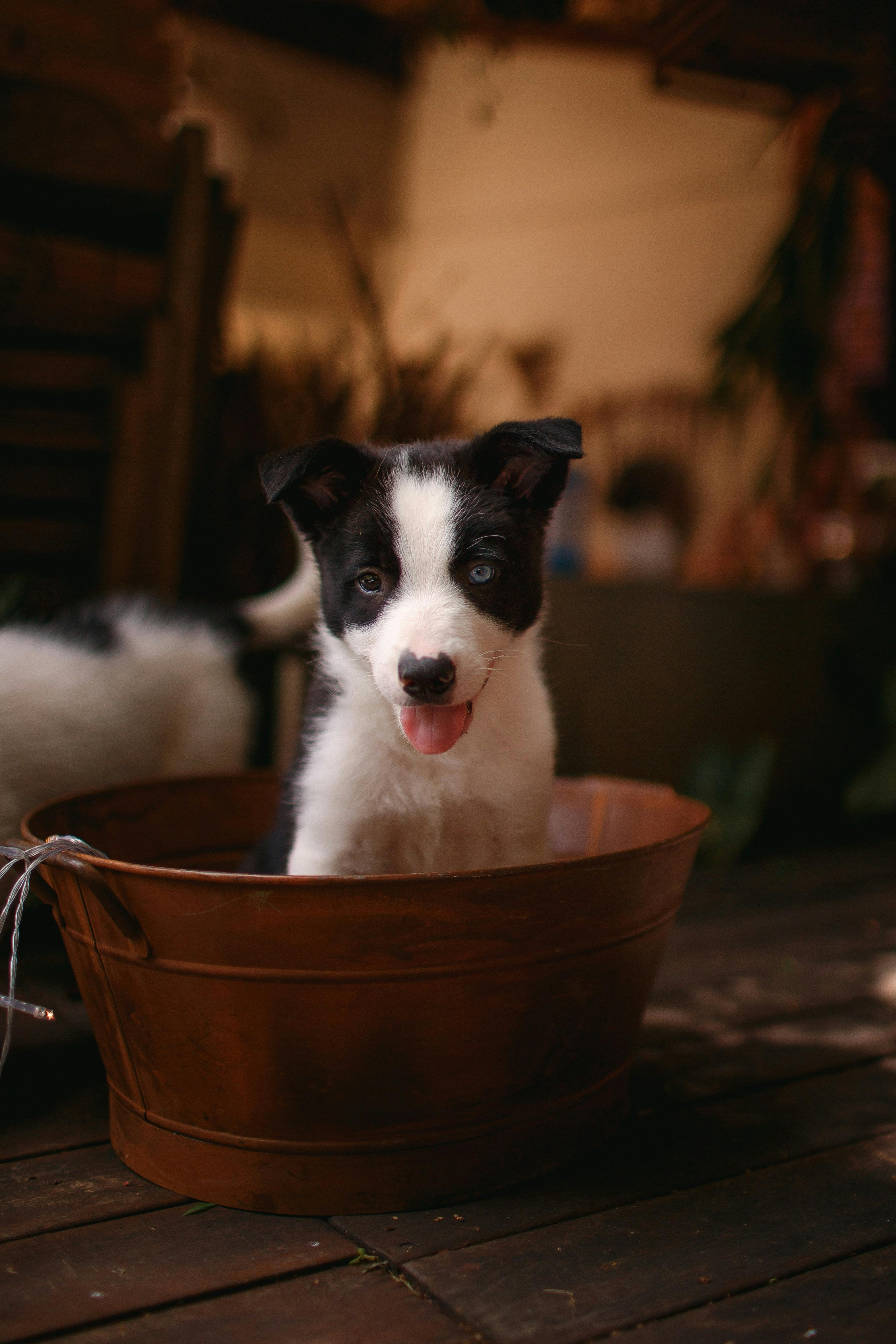
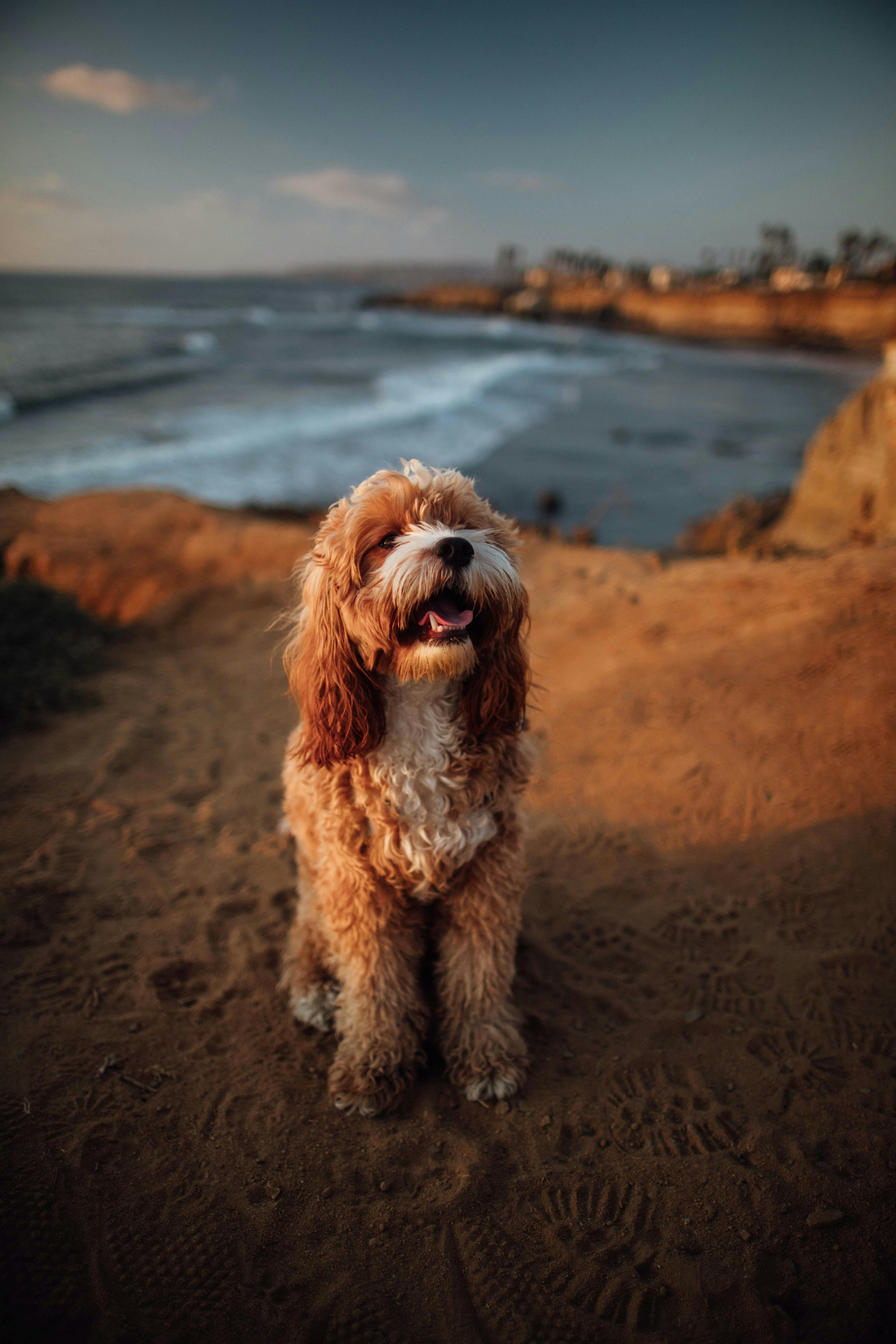
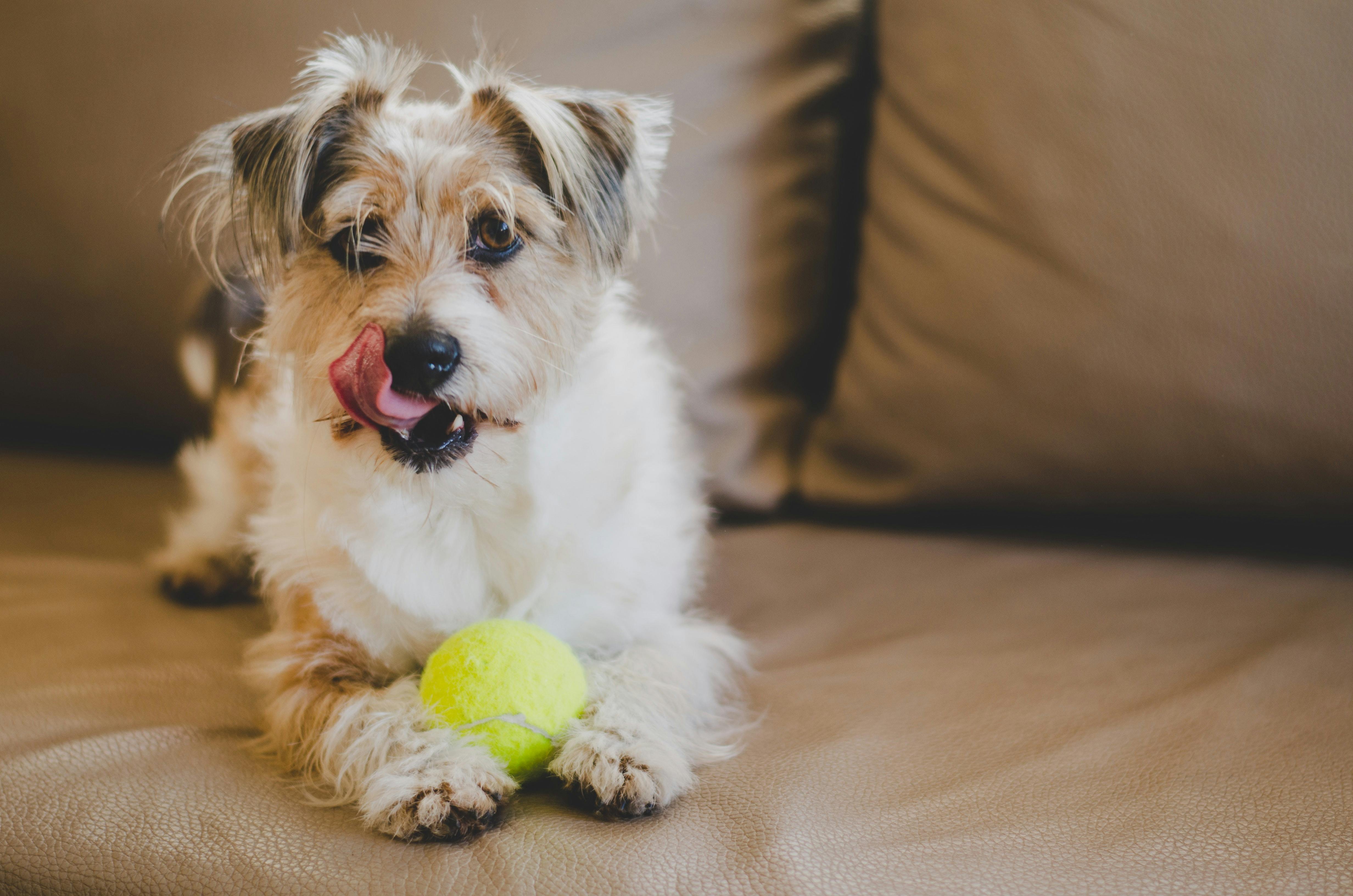

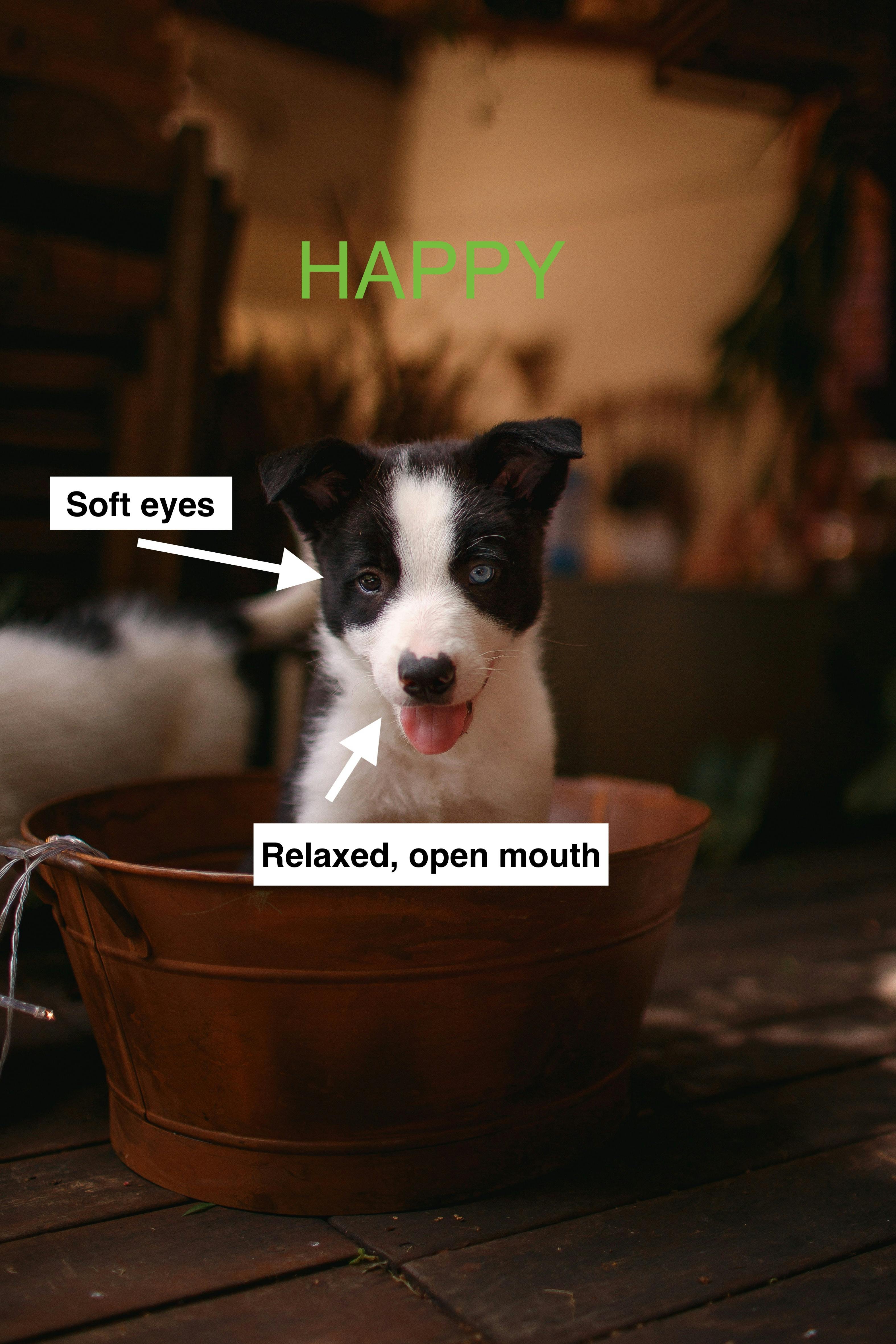
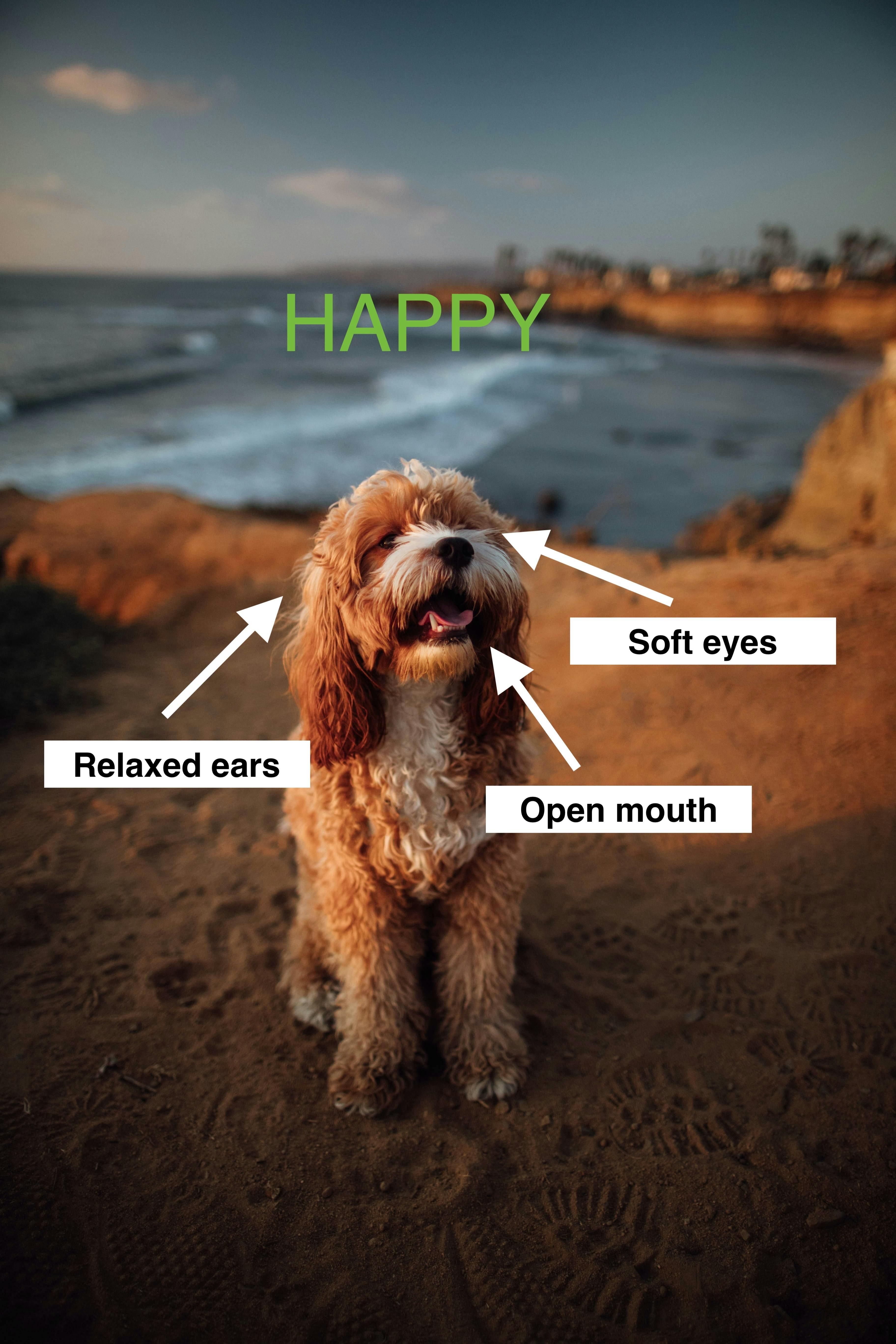
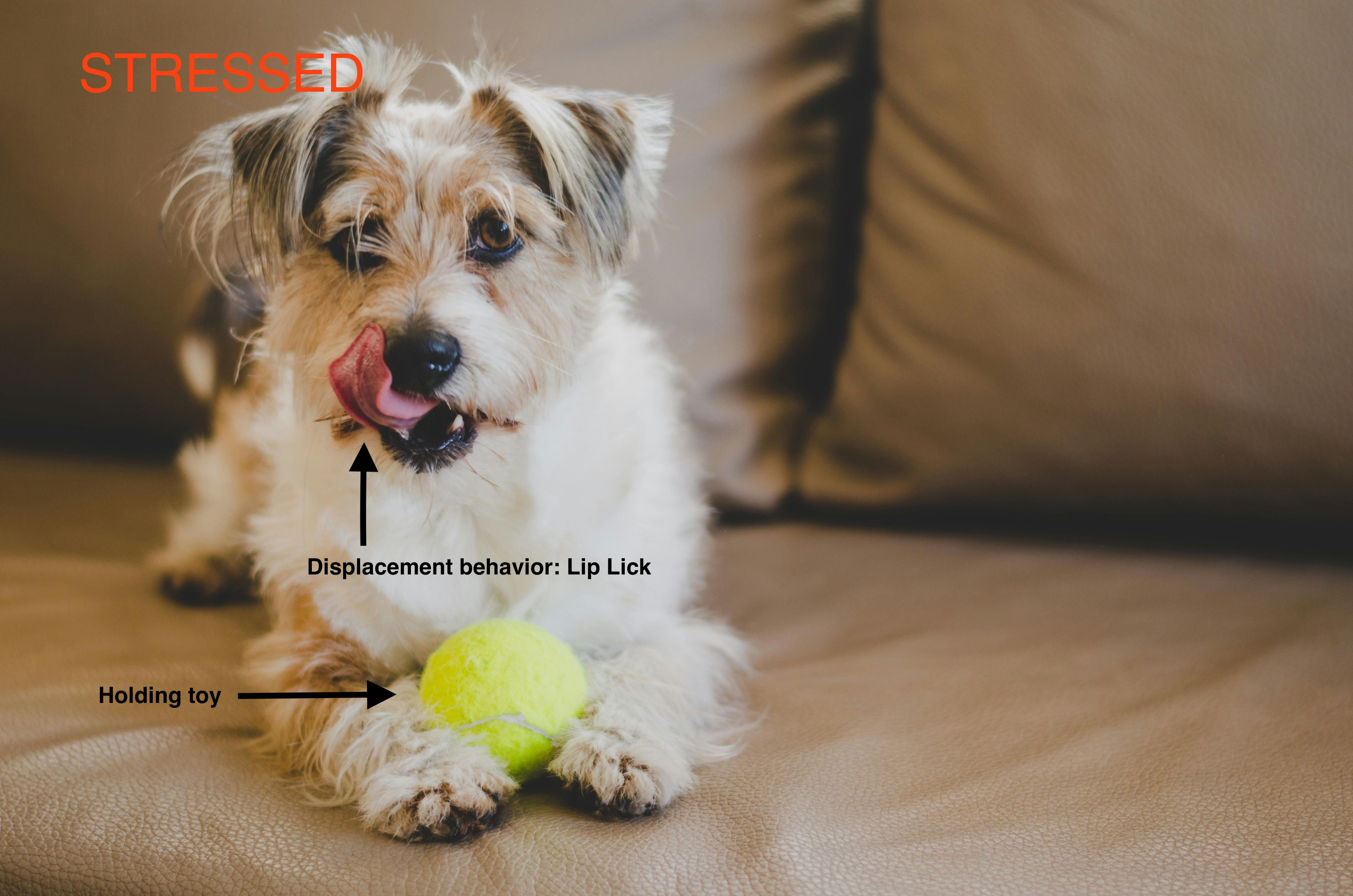
Note that a dog holding a toy in and of itself is not a stress signal, but this dog's stiff body language and lip lick suggest that this dog may be potentially resource guarding this toy. To avoid conflict, it should not be taken from him, especially by a child.
Conclusion
Understanding dog body language is key in having a happy, healthy relationship with your dog. Plus, it'll help you be the dog whisperer amongst your friends. Just know that it can take some time to truly be a dog body language expert. Frequently, dogs show displacement behaviors or stress signals really quickly, almost too quickly for us humans to see and notice. The more you practice, the better you'll get. And, pro tip, it can be helpful to film your dog and slow it down, so you can really see what's going on.

